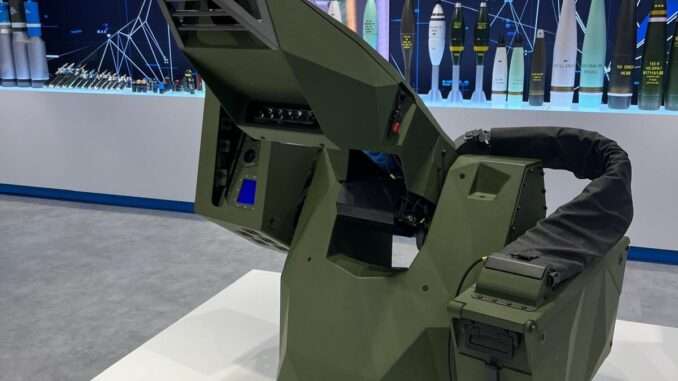
Rheinmetall will be exhibiting various versions of its new family of Remote Controlled Weapon Stations (RCWS) at the Eurosatory 2024. The Natter 7.62 for light and medium machine guns in calibres 5.56mm x 45 or 7.62mm x 51 and the Natter 12.7 for weapons up to heavy .50 machine guns are installed on various combat vehicles. First presented in Paris in 2022, various versions of the “Natter” are now in production.
The Natter weapon station sets new standards in terms of protection, effectiveness and versatility. Thanks to its powerful sensor technology, modularity and self-stabilisation, it offers effective reconnaissance and various operational options. Different versions of the Natter make it possible to equip wheeled and tracked vehicles with a spectrum ranging from light machine guns to 40mm automatic grenade launchers. The Natter is also ITAR-free.
In all versions of the Natter weapon station, the gun mount and gun cradle are largely made of carbon fibre, which significantly reduces weight and vibration. The design also reduces the signature.
The combination of an intuitive operating concept and intelligent assistance
systems provides significant relief for the operator in combat situations. The
modern integrated FlexEye vision system offers day and night vision, (IR) sensor
technology and a laser rangefinder. This allows multiple targets to be displayed
simultaneously, regardless of the weather. Modern image processing algorithms
compensate for movements of the tube axis and thus allow coaxial mounting on
a 2-axis stabilised platform. All relevant data for fire control is processed in real
time, giving the system a high level of precision relevant to the mission. A
powerful tracker enables manual target tracking as well as automatic target
tracking. The Natter supports single fire and various continuous fire modes,
including bursts of fire (Burst Fire/BF), defined firing sequences (Continuous
Fire/CF between one shot every 300 milliseconds and 12 shots per trigger pull)
and fully automatic firing (automatic firing/AF). In grid fire mode, defined target
areas can also be covered with a defined pattern, which is suitable for defence
against small targets, for example.
The use of standard interfaces (e.g. NATO Generic Vehicle Architecture NGVA)
simplifies system integration in a wide range of vehicle classes. Additional
operating consoles can also be integrated. The Natter also fulfils the safety
requirements of IEC 61508.

Be the first to comment